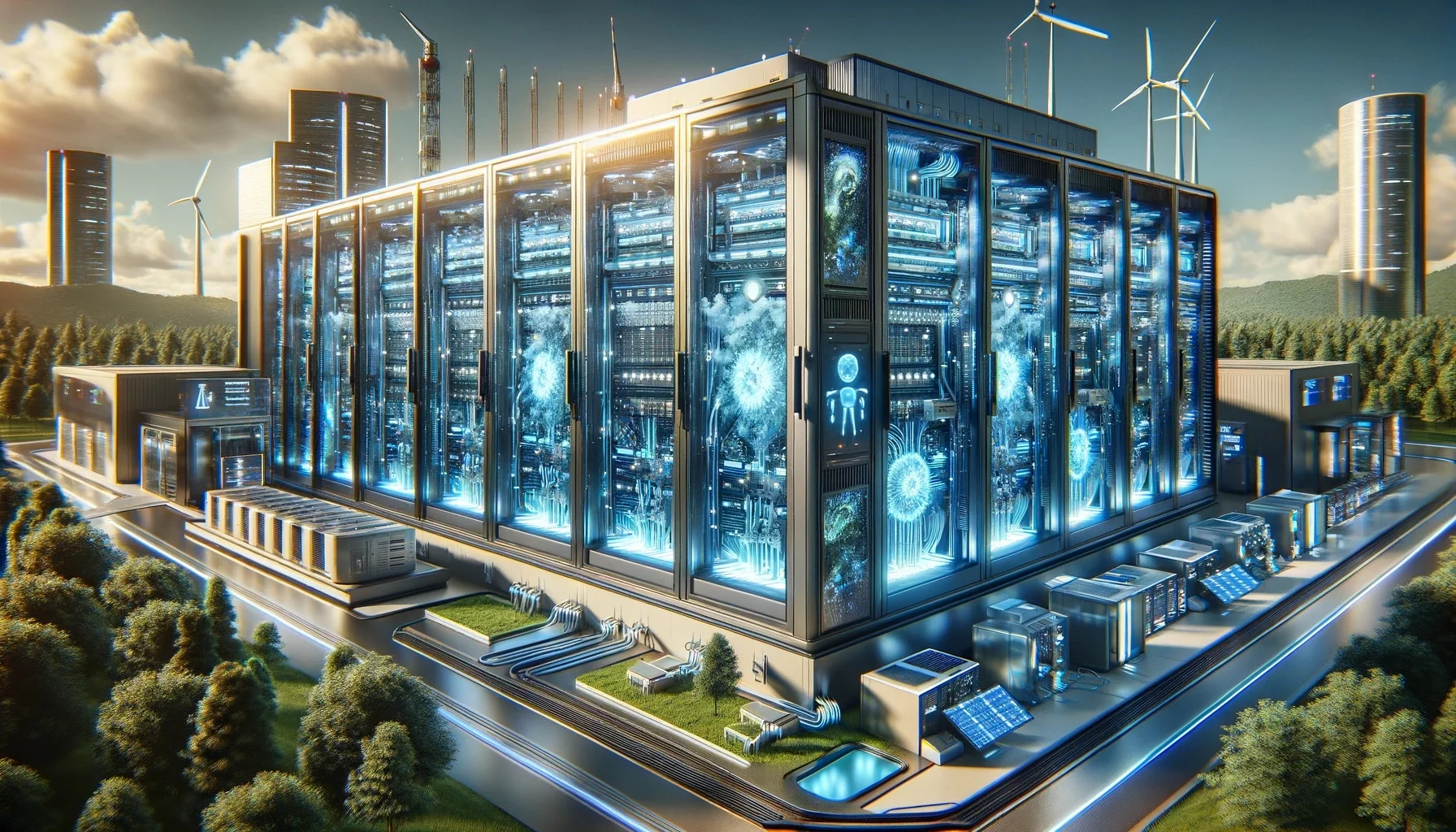In a previous series by our China partner, Chayora, “Decoding the Pulse of Data,” we explored various aspects of the data center industry, focusing on trends in the AIGC era and Chayora’s data center solutions. As technology advances, the industry continually adapts.  With the improvement in AI algorithm quality and the robustness of large models, humanity is sprinting into the age of computing power. In this edition of “IDC Observatory,” we delve deeper into the facets of data centers as the engine driving the digital economy. Here more from Tina Tsui, Chayora Marketing Director.
With the improvement in AI algorithm quality and the robustness of large models, humanity is sprinting into the age of computing power. In this edition of “IDC Observatory,” we delve deeper into the facets of data centers as the engine driving the digital economy. Here more from Tina Tsui, Chayora Marketing Director.
High-Density: The Next Anchor Point for the Digital Economy
With the exponential growth of AI, 5G, and cloud computing, data has emerged as a new production factor, accelerating its expansion. According to IDC, by 2025, global data volume will reach 175ZB. As modern factories for data storage and processing, data centers play crucial roles as the “computing carrier” and “data hub,” significantly driving the growth of the digital economy and earning the title of “unsung heroes” of the digital age.
Observing recent trends, “high-density” has increasingly become associated with “data centers.” With the surge in high computational power demands, high-density data centers are emerging as popular solutions. They efficiently utilize limited physical space and resources, improve energy efficiency, and reduce environmental impact compared to traditional data centers.
High density has become a significant trend in the data center industry. The Ministry of Industry and Information Technology’s “Three-Year Action Plan for the Development of New Data Centers (2021-2023)“ emphasizes enhancing computational power and efficiency, guiding new data centers towards intensive, high-density, intelligent construction. Market performance also reflects this trend: according to CDCC research, the proportion of cabinets with power densities above 8kW in domestic data centers increased from 11% in 2021 to 25% in 2022.
High-density data centers provide significant convenience for expanding infrastructure and addressing complex computational demands from artificial intelligence and data science. However, they are not inherently superior or inferior to traditional data centers; instead, they complement each other, offering flexible choices to clients with varying workload types, budgets, and business needs.
The Power Demands and Transformation Pains of High-Density Data Centers
Industries have been accelerating digital transformation, enhancing business resilience through data intelligence. The development of generative AI has further catalyzed the exponential growth in data and computational needs. Consequently, data centers handle increasing computational loads and require higher efficiencies. With resource constraints, especially in first-tier cities, maximizing the computing, storage, and transmission capacity per unit area is essential to leverage data center value and meet extensive data requirements.
The current era, often called the “golden age of computing power,“ is marked by rapidly escalating computational demands and soaring hardware power consumption. AI applications are spreading quickly, with AI chips evolving towards higher computational power and integration. For example, by 2025, the TDP of x86 CPU chips in data centers is expected to reach around 350W, ARM CPU chips to 600W, and NPU/GPU chips used for AI computations to 750W. This indicates ongoing challenges due to rising hardware power consumption.
Additionally, the growing demand for large-scale data and complex computation across scientific, engineering, and commercial fields makes high-performance computing (HPC) critical for technological advancements. HPC, which aggregates multiple computers and storage devices to process vast amounts of data at high speeds, is becoming a transformative force. According to Hyperion Research, the global HPC market will reach $44 billion in 2022, presenting dual heat and power density challenges for data centers.
High-density data centers impose stringent power, cooling, operations, and security technologies requirements while enhancing performance and reducing footprint.

Embracing a Future of Opportunities and Challenges
The future of computational power holds immense promise for the data center industry. According to the “Intelligent World 2030“ report, by 2030, humanity will enter the Yottabyte (YB) era, with annual data additions reaching 1YB globally. General computational power will increase tenfold, and AI computational power will increase five hundredfold, making a hundredfold growth in demand over the next decade a norm.
In the past decade, companies like Amazon, Facebook, Google, and Microsoft have steadily advanced along the path of high-density data centers, demonstrating the industry’s recognition of this trend. Chayora, a provider specializing in high-performance, large-scale data centers, has made forward-looking deployments in China.
The expanding demand for computational power and resulting energy consumption pose significant cooling challenges for data centers. Traditional air-cooling methods need to improve and enhance cooling efficiency. Industry experts agree that liquid cooling will be a crucial solution under AI and the “dual carbon“ background. Liquid cooling systems save 30% to 50% more electricity than air cooling systems, effectively helping data centers reduce energy consumption and carbon emissions. Chayora’s data center infrastructure design incorporates air and liquid cooling, providing solutions for different power-density cabinets.
Promoting energy conservation and emission reduction is paramount for the data center industry’s development under the carbon peaking and neutrality goals. As the solid “foundation“ of the digital economy, green, low-carbon development of data centers is vital. In today’s rapidly evolving AI technology landscape, the density of future data centers may continue to grow. For manufacturers, the only constant is change. By embracing the challenges brought by the new trend of high-density data centers, they can unlock more opportunities and possibilities.
Chayora will continue to explore the industry, bringing more insights into data centers. Stay tuned for more valuable content.
Learn more: EdgeConneX facilities in:
- Greater Shanghai Data Center – China
- Beijing-Tianjin Data Center Campus – China
- For more information on Chayora, please visit: www.chayora.com


